BULL THISTLE
|
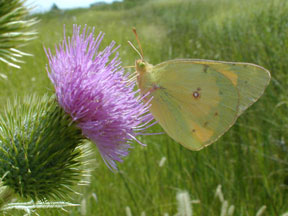 |
| File Size: 71 KB |
|
|
|
Cirsium vulgare (Savi ) Ten.
|
| Quivira National Wildlife Refuge, Stafford County, Kansas |
| Biennial |
| Height: 20-80 inches |
| Family: Asteraceae - Sunflower Family |
| Flowering Period: July, August, September |
|
| Stems: | | Erect, stout, much branched, leafy, green or brownish, furrowed, spreading coarse-hairy or covered with cob-web like hairs; upper portion conspicuously spiny-winged. | | Leaves: | | Alternate, simple, green, wavy or crinkled, deeply cleft in pinnate fashion; upper surface short coarse-hairy with yellowish prickles; lower surface pale green or grayish woolly along the veins; young leaves elliptic to obovate, initially unlobed but soon shallowly to pinnately lobed; margins with yellowish spines 1/25 to 1/5 inch long; rosette leaves oblanceolate to narrowly elliptic, 5 to 20 inches long, 1.2 to 6 inches wide, deeply pinnately lobed; lobes in 4-6 pairs, frequently 2-cleft; segments lanceolate to triangular; tips sharp-pointed or tapering to long points, tipped with stout spine to 2/5 inch long, yellow; stem leaves similar but progressively smaller; lobes often linear-lanceolate. | | Inflorescences: | | Heads, several, terminal and solitary on branches, often appearing clustered, urn-shaped, .8 to 1.6 inches tall, .8 to 2 inches in diameter. | | Flowers: | | Bracts in 5-8 rows, narrowly lanceolate, .25 to 1.2 inches long,, less than 1/12 inch wide, progressively longer and narrower from outer to inner, cobwebby, spine-tipped, lacking conspicuous ridge on back; ray florets absent; disk florets numerous, 1 to 1.4 inches long, dark purple or rose to pinkish-purple. | | Fruits: | | Achene, oblong, 1/8 to 1/6 inch long, flattened, white or pale yellow with dark brown streaks, tipped with white or brownish feather-like bristles, enclosing small seed. | | Habitat: | | Waste areas, pastures, roadsides, old fields, gardens. | | Distribution: | | Throughout Kansas. | | Origin: | | Native of Eurasia, now naturalized. | | Reproduction: | | By seed. | | Uses: | | Native Americans drank a warm tea of the roots to aid digestion and used the steam to treat muscle stiffness and rheumatism. A tea of the leaves was taken for neuralgia. The roots were also used to treat stomach cramps and were eaten as a food source. The fresh flowers were chewed to cover up the taste of medicines and the achene bristles were used as the tail for blow darts. | | Comments: | | Bull thistle is an aggressive weed officially listed as a noxious weed in Kansas. |
|
| Bull thistle heads and achene bristles |  | | 140 KB | | Quivira National Wildlife Refuge, Stafford County, Kansas |
| | Bull thistle |  | | 83 KB | | Quivira National Wildlife Refuge, Stafford County, Kansas |
| | Bull thistle inflorescence bracts and florets |  | | 95 KB | | Quivira National Wildlife Refuge, Stafford County, Kansas |
| | Bull thistle leaves |  | | 141 KB | | Quivira National Wildlife Refuge, Stafford County, Kansas |
| | Bull thistle |  | | 86 KB | | Scott Lake, Scott County, Kansas |
| | Bull thistle |  | | 149 KB | | Scott Lake, Scott County, Kansas |
| | Bull thistle habit | 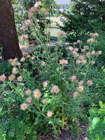 | | 185 KB | | Riley County, Kansas |
| | Bull thistle inflorescence | 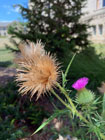 | | 94 KB | | Riley County, Kansas |
| | Bull thistle leaf | 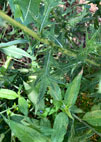 | | 135 KB | | Riley County, Kansas |
| | Bull thistle inflorescence | 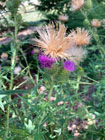 | | 116 KB | | Riley County, Kansas |
|
|
|
|
|
|
|